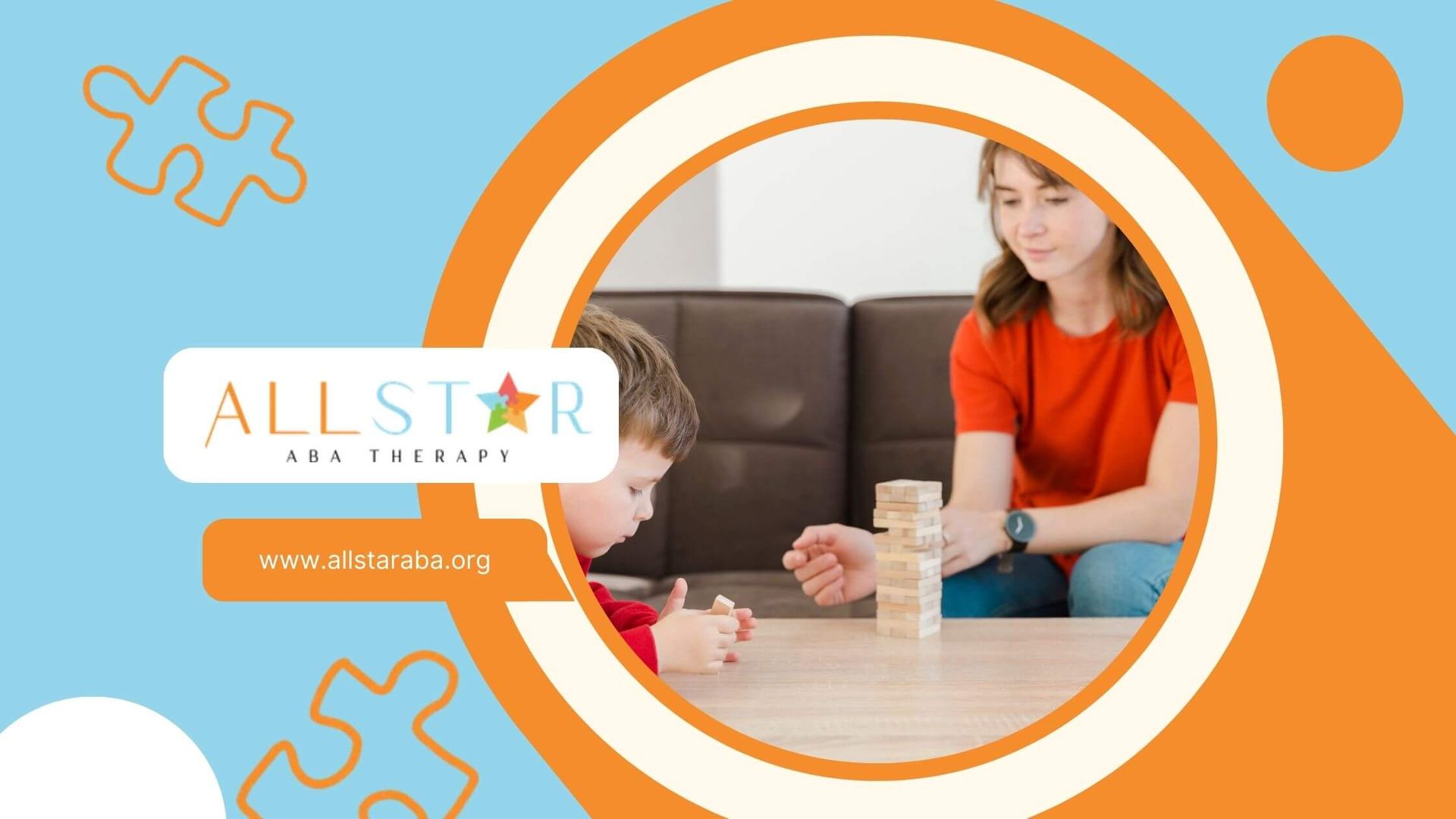New Paragraph
Dive Into ABA: Understanding the Two Teaching Methods
In the field of behavior analysis, Applied Behavior Analysis (ABA) therapy stands out as a scientifically validated approach to understanding and modifying behavior. This therapy is rooted in the principles of behavior analysis and uses evidence-based strategies to bring about positive behavioral changes. ABA therapy proves particularly beneficial for individuals with Autism Spectrum Disorder (ASD), helping them learn new skills, reduce challenging behaviors, and thrive in various aspects of life.
Overview of ABA Therapy
At its core, ABA therapy focuses on understanding the relationship between behavior, its antecedents (triggers), and its consequences. By carefully analyzing these elements, therapists can design individualized interventions tailored to meet the specific needs of each child. ABA therapy emphasizes teaching desirable behaviors and reducing undesirable actions, ultimately aiming to enhance the individual's quality of life and independence.
Definition and Goals of ABA Therapy
Applied Behavior Analysis (ABA) therapy is a type of therapy that seeks to understand behavior and how it is impacted by the environment. ABA therapy is grounded in the science of behavior analysis and aims to increase positive behaviors while reducing challenging behaviors. Through a systematic approach, ABA therapists work with individuals to identify the antecedents and consequences that influence their behavior. They then develop personalized intervention plans that incorporate various ABA strategies, such as positive reinforcement and skill acquisition techniques.
The fundamental goals of ABA therapy extend beyond addressing specific behavioral challenges. ABA therapy empowers individuals to learn new skills, improve communication, and increase their independence in daily routines. By promoting positive behaviors and reducing undesirable actions, ABA therapy fosters a supportive learning environment where individuals can reach their full potential.
Importance of Specialized Teaching Methods in ABA
In the context of ABA therapy, employing specialized teaching methods becomes crucial for effective intervention. This systematic approach to teaching is backed by scientific data and aims to break down complex skills into smaller, manageable steps. By using specialized teaching strategies, ABA therapists can systematically introduce new skills, provide clear prompts and instructions, and offer consistent reinforcement to shape the desired behavior.
Behavior analysts play a vital role in selecting and implementing these teaching strategies. They evaluate the child's individual needs, learning style, and the specific behaviors targeted for intervention. By adapting their approach based on these factors, therapists ensure that the chosen methods align with the child's strengths and challenges. The ultimate goal is to empower the child to learn and generalize these skills across different environments and interactions.
Key Teaching Methods in ABA
Among the array of teaching methods used in ABA, two stand out as widely recognized and effective: Discrete Trial Training (DTT) and Natural Environment Teaching (NET). Each method presents a distinct approach to teaching, with its own set of principles and applications. While DTT follows a highly structured format, NET emphasizes a more naturalistic and child-led learning experience.
The choice between DTT and NET depends on several factors, including the child’s age, developmental level, specific needs, and the target behaviors identified for intervention. Both methods, however, utilize the principles of ABA, including positive reinforcement, to encourage desired behavior and support skill development.
Discrete Trial Training (DTT) Explained
Discrete Trial Training (DTT) is a structured teaching method in ABA therapy, breaking skills into smaller steps. It involves clear prompts, repetition, and positive reinforcement for desired behaviors. DTT focuses on repetition to teach new skills effectively, often used for children with autism spectrum disorder to improve communication and social skills. This method allows for the systematic teaching of academic and daily living skills in a controlled environment to promote skill acquisition and behavior change.
Benefits of DTT in ABA
DTT offers several advantages in supporting children with ASD. First and foremost, its structured format provides a clear and predictable learning environment, which can be particularly beneficial for children who thrive on routine and consistency. Clear prompts and instructions associated with DTT minimize confusion and help children understand what is expected of them, making it easier to acquire new skills.
Another significant benefit of DTT lies in its use of positive reinforcement. When a child responds correctly, they receive immediate positive reinforcement, such as verbal praise, a small toy, or a token that can be exchanged for a larger reward. This positive reinforcement strengthens the desired behavior, making it more likely to occur again in the future.
Natural Environment Teaching (NET) Explained
Natural Environment Teaching (NET) emphasizes creating a setting where skills can be naturally developed. This method utilizes the individual's surroundings to teach concepts relevant to their daily life, promoting generalization of skills across different environments. By incorporating naturalistic teaching strategies and leveraging natural reinforcers, NET offers learning opportunities in real-life scenarios, enhancing skill acquisition. It focuses on teaching smaller steps within the individual's natural environment, allowing for incidental teaching and supporting the generalization of skills. Emphasizing a supportive learning environment, NET caters to specific needs and promotes desired behaviors effectively.
Benefits of NET in ABA
One of the key benefits of NET is its ability to enhance a child's motivation and engagement in learning. By embedding teaching opportunities within enjoyable activities, NET transforms learning from a chore into an exciting endeavor. This approach often leads to increased participation and faster learning, as children are intrinsically motivated to engage with activities that pique their interest.
NET also facilitates the generalization of skills, making it more likely that children will apply what they've learned in various settings. Since NET sessions often take place in natural environments such as homes, parks, or community settings, children get the opportunity to practice and utilize their skills in real-life situations. The varied settings, stimuli, and interactions encountered during NET promote adaptability and equip children with the skills they need to navigate their world confidently.
Application of ABA Teaching Methods
The application of DTT and NET in ABA therapy is not an “either/or” scenario; rather, experienced therapists often utilize a combination of both methods. The specific approach is often determined through a thorough assessment of the child's individual needs, strengths, and the specific skills or behaviors being targeted.
Furthermore, the therapist considers the child’s age and learning style when tailoring the approach. While DTT might be more suitable during the initial stages of learning a new skill, especially for younger children or those requiring clear structure, NET can be progressively integrated to encourage generalization and foster independence.
Customizing Methods to Suit Individual Needs
Recognizing that each child is unique, ABA therapy underscores the importance of customizing teaching methods to cater to their individual needs and learning styles. What works effectively for one child might not yield the same results for another, highlighting the necessity for personalized intervention plans. This customization process begins with a comprehensive assessment, where behavior analysts work closely with the child and their family to understand their strengths, challenges, and goals for therapy.
For young children, ABA strategies often revolve around play-based learning to keep them engaged and motivated. As children grow and their needs evolve, therapists adapt teaching methods to align with their developmental stage. The flexibility of ABA therapy ensures that interventions remain effective and relevant throughout the child's developmental journey.
Practical Examples of ABA Methods in Action
The principles of DTT and NET can be observed in various real-life scenarios, demonstrating their effectiveness in promoting positive behaviors and skills. Consider these practical examples of ABA interventions:
- Teaching a Child to Request for a Snack Using DTT: In a therapeutic setting, a therapist uses DTT to teach a child to request a snack. The therapist presents a desired snack (discriminative stimulus), prompts the child to say “Snack, please” (instruction), and then rewards the child with the snack (positive reinforcement) upon a correct response.
- Encouraging Social Interaction on a Playground Using NET: During a play session at a park, a therapist employs NET to encourage social interaction. They observe the child's interest in a group of children playing tag and prompts the child to join the game. As the child successfully engages with peers, the therapist provides praise and encouragement.
- Promoting Independence in Daily Routines Using Both Methods: To promote independence in daily routines, a combination of DTT and NET is employed. DTT is used to teach the child the steps involved in brushing their teeth (task analysis), while NET is implemented to encourage the child to initiate and complete the task independently in their own bathroom.
Impact of ABA Teaching Methods
The impact of ABA teaching methods extends beyond the acquisition of specific skills. These methods, with their focus on positive reinforcement and individualized teaching strategies, play a pivotal role in shaping not only behaviors but also a child's overall development and well-being. Implementing ABA can have a major impact on a child’s future.
By fostering a positive learning environment and equipping individuals with essential life skills, ABA therapy empowers them to lead fulfilling and meaningful lives. This positive approach paves the way for greater independence, improved social interactions, and enhanced communication, ultimately enhancing the overall quality of life.
How DTT and NET Enhance Learning Outcomes
Both DTT and NET, when implemented effectively, contribute significantly to positive learning outcomes. DTT, with its clear instructions and consistent reinforcement, provides a strong foundation for skill acquisition, especially when introducing new or challenging behaviors. Its structured approach helps in breaking down complex skills into digestible steps, increasing the likelihood of mastery and reducing frustration.
NET, on the other hand, excels in promoting generalization and fostering independence. By creating learning opportunities within naturally occurring situations, NET helps individuals apply learned skills in different environments and with different people. This naturalistic approach strengthens the relevance of learned skills and encourages their spontaneous use in everyday situations.
Success Stories and Case Studies
Countless success stories and case studies illustrate the transformative power of ABA therapy. Children who once struggled with communication have blossomed into articulate individuals, thanks to the structured learning environment and consistent reinforcement provided by methods like DTT.
Similarly, the principles of NET have empowered individuals to confidently navigate social situations, engage in meaningful play, and participate actively in daily routines. These stories highlight how ABA methods, tailored to individual needs, can unlock a child’s potential and lead them on a path of continuous growth and development.
Conclusion
In conclusion, it is essential to prioritize your mental health and well-being. By incorporating these tips into your daily routine, you can take proactive steps towards maintaining a healthy mindset and emotional balance. Remember that self-care is not selfish but necessary for your overall health and happiness. Take the time to invest in yourself and seek professional help if needed. Your mental health matters, so make it a priority starting today.
At All Stars ABA, we specialize in utilizing both comprehensive and focused ABA teaching methods to meet the unique needs of each child. Whether it's teaching broad skills or targeting specific behaviors, our expert therapists tailor their approach to create lasting, meaningful progress. We focus on building essential skills, enhancing communication, and fostering independence. Ready to explore how our individualized ABA programs can make a difference? Contact All Stars ABA today and take the first step toward your child’s success!
Frequently Asked Questions
What are the core differences between DTT and NET?
Discrete trial training (DTT) emphasizes structured teaching of specific behaviors in a controlled environment. In contrast, natural environment teaching (NET) utilizes a child’s natural environment and interests as opportunities for teaching strategies.
How do ABA teaching methods adapt to different learning styles?
ABA methods are highly individualized. By focusing on a child’s unique needs and interests, ABA strategies and teaching strategies are adjusted to maximize learning across various settings and environments.
What is ABA and how does it benefit individuals with autism?
ABA therapy, a scientifically validated therapy, uses positive reinforcement and skill acquisition techniques to improve communication skills, social skills, and reduce challenging behaviors for those with autism spectrum disorder.
Need Support?
We're Here to Help!
Our experienced team is ready to assist you. Reach out today to discuss how we can support your child's development and well-being.
Get started with expert ABA therapy today.








